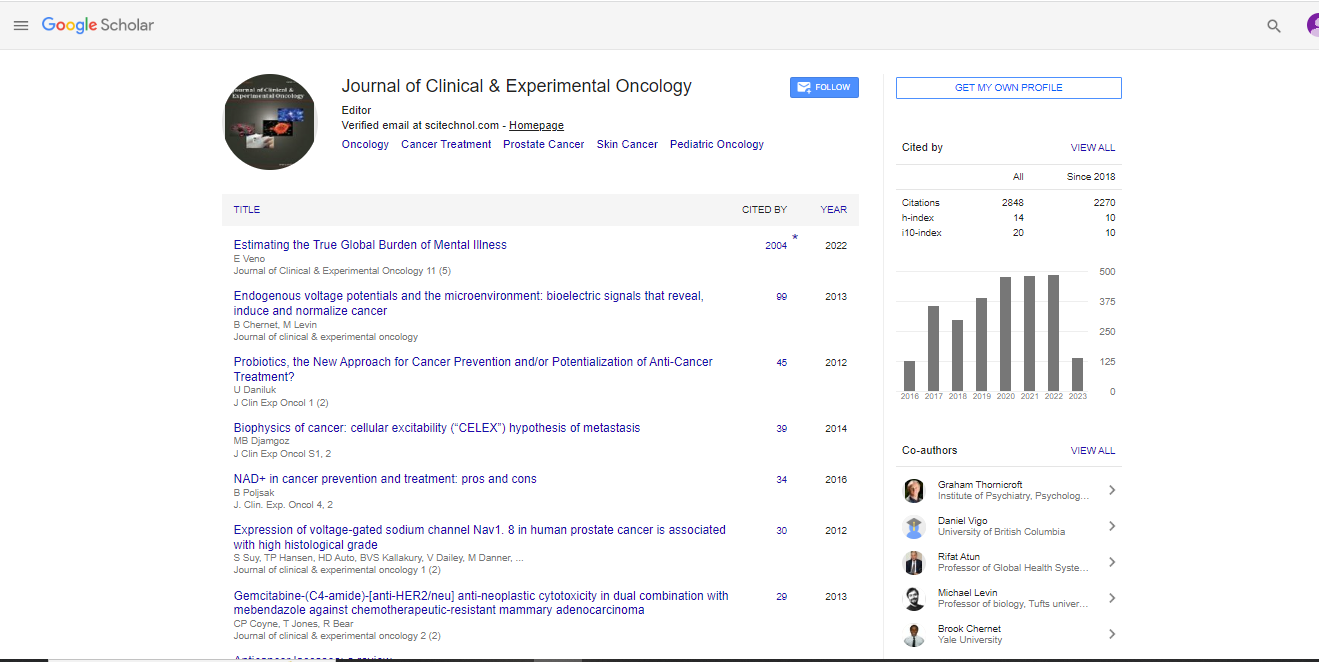Research Article, J Clin Exp Oncol Vol: 6 Issue: 3
Feasibility of Single Tumorspot Treatment in Peritoneal Carcinomatosis via Close Range Doxorubicin Impaction in Pressurized Intra-Peritoneal Aerosol Chemotherapy (PIPAC)
Tanja Khosrawipour1, Dan Wu1, Alexander Bellendorf2, Nirushika Mohanaraja3, Ebru Karabay3, David Diaz-Carballo2, Veria Khosrawipour4*
1Department of General Surgery, Marien Hospital Herne, Ruhr-University Bochum, Herne, Germany
2Department of Nuclear Medicine, University Hospital Essen, Essen, Germany
3Department of Medical physics, Technical University Dortmund, Dortmund, Germany
4Department of Orthopedic and Trauma Surgery, Ortho-Clinic Dortmund, Germany
*Corresponding Author : Veria Khosrawipour, MD
Department of Orthopedic and Trauma Surgery, Ortho-Clinic Dortmund, Virchowstrasse 444263 Dortmund, Germany
Tel: +49 0231-9430-711 E-mail: veriakhosrawipour@yahoo.de
Received: April 13, 2017 Accepted: April 24, 2017 Published: May 02, 2017
Citation: Khosrawipour T, Wu D, Bellendorf A, Mohanaraja N, Karabay E, et al. (2017) Feasibility of Single Tumorspot Treatment in Peritoneal Carcinomatosis via Close Range Doxorubicin Impaction in Pressurized Intra-Peritoneal Aerosol Chemotherapy (PIPAC). J Clin Exp Oncol 6:3. doi: 10.4172/2324-9110.1000187
Abstract
Background: Pressurized Intraperitoneal Aerosol Chemotherapy (PIPAC) is a well-established, yet not fully evaluated new treatment approach for peritoneal carcinomatosis with the aim at enabling localized application of chemo aerosol within the abdominal cavity. Distribution inhomogeneity in PIPAC has been previously indicated in prior experiments. This study was conducted to investigate whether this finding can be used to achieve localized high drug concentrations into micro metastasis.
Materials and Methods: PIPAC construct was built using a hermetic container system which mimics the abdominal cavity. Fresh parietal peritoneum portions from post-mortem swine were cut into samples and placed vertically in the center of a box. The Micropump© (MIP) was introduced via trocar at the side of the box and located at 1cm from the samples to enable close range impaction of the aerosolized doxorubicin with the samples. Doxorubicin penetration depth was radially measured by fluorescence microscopy from the center of targets to the outer rim.
Results: Tissue doxorubicin penetration in the tissue was lower towards the outer rim and further away from the center of the sprayjet. Maximal penetration of drug was achieved in the midpoint of the sprayjet with 417± 87(SD) µm and a minimal penetration was reached at 3 cm from center with 45 ± 20 (SD) µm.
Conclusions: Our ex vivo data indicated that it might be feasible and beneficial to treat single cancer nodules at close range using PIPAC as it increases local penetration rates and therefore might be advantageous prior or after the planned cytoreductive surgery.
 Spanish
Spanish  Chinese
Chinese  Russian
Russian  German
German  French
French  Japanese
Japanese  Portuguese
Portuguese  Hindi
Hindi 



